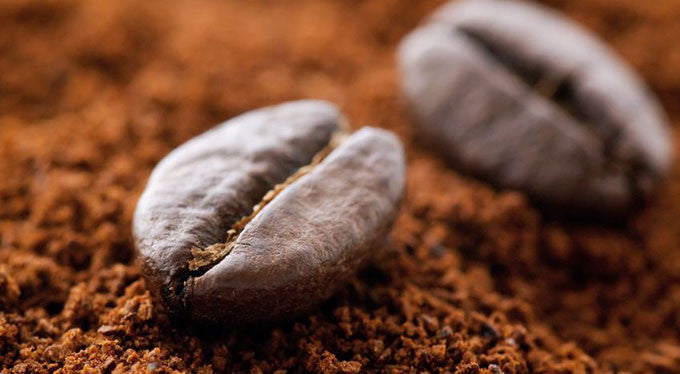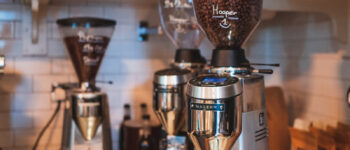
Coffee is consumed worldwide – the industry ranges from the growth, production, and distribution. There are so many different blends, brands, and beans that it can be difficult to understand what can make each cup of coffee different from the other. A blend of coffee is the result of combining two different beans to produce different flavors and strengths. Blends are not standardized in the coffee industry, making it difficult to fully grasp the core differences between cups. In order to define a House Blend coffee, you must first understand the basic components of roasting coffee.
The Basics
The degree to which a coffee bean is roasted is one of the most important factors that determine the taste of the coffee. Unroasted beans (green in color) are put into a roaster and exposed to a high level of heat. When the bean “cracks,” it loses its outer coating and releases the flavor of the bean. The longer the bean roasts, the darker and stronger the bean becomes. When the roasting is complete, the beans can be blended and ground to create distinct flavors and brews.
Since blends are not standardized, the various roasts of coffee are how we would refer to the various different types of bean categories, which are: light roast, medium roast, medium-dark roast, and dark roast. Light roast coffees will generally boast the most caffeine while maintaining a light color (and often lighter flavor). Medium roasts are medium brown in color and provide a more balanced flavor and aroma. Medium-dark roasts are a darker brown than the medium beans and boast a stronger and more full-bodied flavor than light and medium. Lastly, dark roasts are dark brown in color and will boast a bitter, smoky taste in the cup.
See more : How to Find the Best Coffee Beans for Espresso
Other things that factor in to the taste of coffee are the originating country in which the beans are harvested from and the processing techniques that are unique to those region. Also, coffee flavors and tastes can also vary distinctly dependent on how the bean is brewed into the cup – for example, cold press, drip, etc.
Blends of Coffee
There are a variety of different coffee blends around the world today, so choosing one can be a bit difficult. Before we get into what makes a house blend special, here is a quick look at a few different coffee blends.
Breakfast Blends are generally a light roast of coffee that is not overwhelmingly flavorful but is very full of caffeine. They are not known to be full-bodied, like a dark blend, but that does not mean they are weak or watery. Breakfast blends are often described as mild and well balanced; “a perfect start to your day.”
House Blends can often be described as reliable and straightforward – a blend that is a “go-to” in a coffee shop. They are generally seen as a consistent and high-value product that you can count on. The brew of a house blend coffee is different than that of a breakfast blend or espresso roast – meaning that when you pour a cup of a house blend coffee, you should expect to fall somewhere in the middle of a light roast and dark roast and have intermediate flavor. Here at Carta Coffee, our house blends are our Captain’s Roast and Meridian Roast coffees.
See more : A Caffeine Lover’s Guide to Dunkin’ Drinks
Dark Roasted Blends are full-bodied, smoky, flavors. Due to extended time in the roaster, the caffeine levels are lower than that of the lighter roasted blends. However, the aroma and flavor are stronger.
House Blends: What Makes Them Special?
House Blend coffee is unique to every coffee shop, every roaster, and every drinker. That is what makes them so unique and so special. The blending and serving process is built entirely on the preference of the roaster and/or distributor. For example, Starbucks describes their House Blend as “the very first blend we ever created for you back in 1971. The one blend that set the course for the way our master blenders and roasters work even today. A true reflection of us and delicious cup of coffee, period.”
Brewing coffee is also an important factor in how the flavors and aromas are represented in the cup. Preference depends on the consumer of the final cup, but there are clear benefits to different brewing styles.
For House Blend coffee, it has been said to taste best when it has been brewed through a Chemex machine. This machine will bring out the smooth texture and purer flavor of the blend. A Chemex is a “slow-and-steady” approach to coffee brewing, similar to a drip machine, but with a filter that is 3 times as thick. The machine keeps the water that is pouring over the beans at an ideal 190 degrees, draws out any excess oil residue on the bean, and provides the smoothest and purest taste of these unique blends.
Coffee can be seen as an art form in itself. From the temperature of the water to the flavors within the bean, making a decent cup of coffee is not as easy as it seems. House Blends are unique based on the time and energy spent harvesting, roasting, tasting and re-tasting to create a unique blend that ends up in your cup.
Nigel Gildon editor:Nigel Gildon is the editor of Chef Wayne’s Big Mamou: Chef Wayne’s Big Mamou. He has worked in the publishing industry for many years and has a passion for helping new authors get their work into the hands of readers. 63 Liberty Street * Springfield, MA 01003



